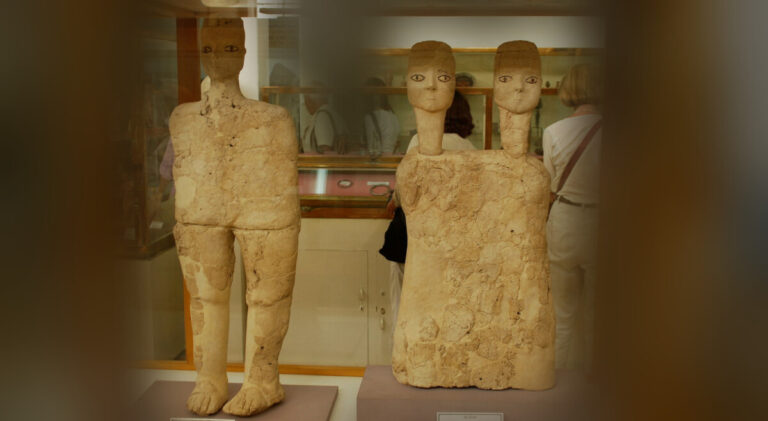The Ain Ghazal statues, dating back to around 7200 BCE, are among the earliest known examples of human figures crafted from plaster, highlighting an advanced use of materials in the Neolithic period. This technique involved applying plaster, made from lime and powdered limestone, over a core of reeds and twine to create lifelike statues with detailed facial features and expressive eyes made from bitumen. The use of plaster for such artistic and possibly ritualistic purposes at Ain Ghazal predates many other known uses of the material in sculpture. While plaster had been used in simple construction and repair tasks even earlier, the sophisticated application at Ain Ghazal marks a significant development in the artistic capabilities of Neolithic societies.
Timeline Story
Ain Ghazal Statues: Early Plaster Art
Ain Ghazal Statues: Early Plaster Art

Go to Timelines ...
1START: Philosophy >
2Science >
3Critical Thinking >
4History!
Time Left:
Email Notification
Subscribe to our Weekly Wisdom Builder: It’s Free! No ads! No catches! One email each Monday, use it as your weekly to-do checklist! Delete it after you’ve pondered your weekly 4 minute brain boost.
Exactly what the world needs RIGHT NOW!
Wisdom at the crossroads of knowledge.
Wisdom emerges from the consistent exploration of the intersections of philosophy, science, critical thinking, and history.
Get the full story…
These timeline stories are part of my Visual Insights page, where our best ideas come alive. Dive into these timelines to gain a broader perspective, as found in the Stoic practice of the “view from above.” For a deeper exploration of our best ideas beyond learning by meme, check out my new book…
Coming December 2024: Immerse yourself in knowledge, not snippets.
- Discover how 30 influential philosophers shaped our understanding of the world.
- Explore the concepts that continue to influence science, art, and culture today.
- Get your copy now and start thinking like the greatest minds in history!










